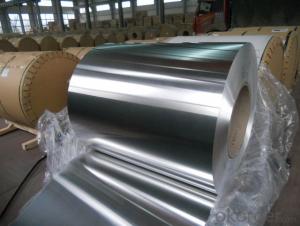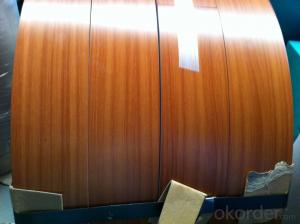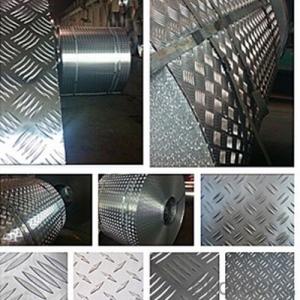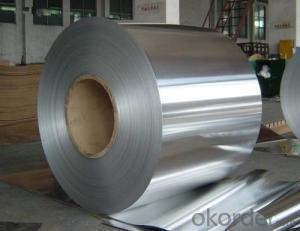Aluminum Composite Sheets for Open Air Outer Decoration Aluminium Coils
- Loading Port:
- Shanghai
- Payment Terms:
- TT OR LC
- Min Order Qty:
- 5 m.t.
- Supply Capability:
- 3000 m.t./month
OKorder Service Pledge
OKorder Financial Service
You Might Also Like
Specification
1.Structure of Aluminium Coils for Open Air Outer Decoration
Aluminium Coils for Open Air Outer Decoration is one semi-finished aluminium material. This strip can be rolled down to aluminium coil,sheet,circle ect. The alloy AA1050 is widly used in building, industry ect. Its weight is much lower than steel. So many customers choosed aluminium material instead of steel.
2. Main features of Aluminium Coils for Open Air Outer Decoration
a.Competitive price---We have our own mills and can produce mill finished aluminium coils, so we can control the production cost better.
b.Professional after-sale service---We have more than 15 years exportation experience and you need not worry about the exporation problems.
c.Fast delivery time---We can control the delivery time within 35 days.
3. Image
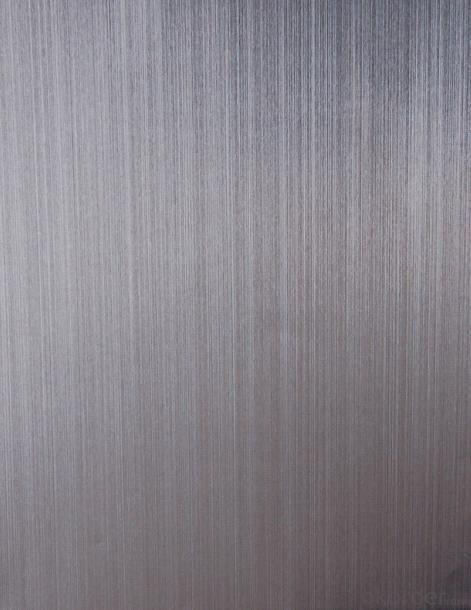
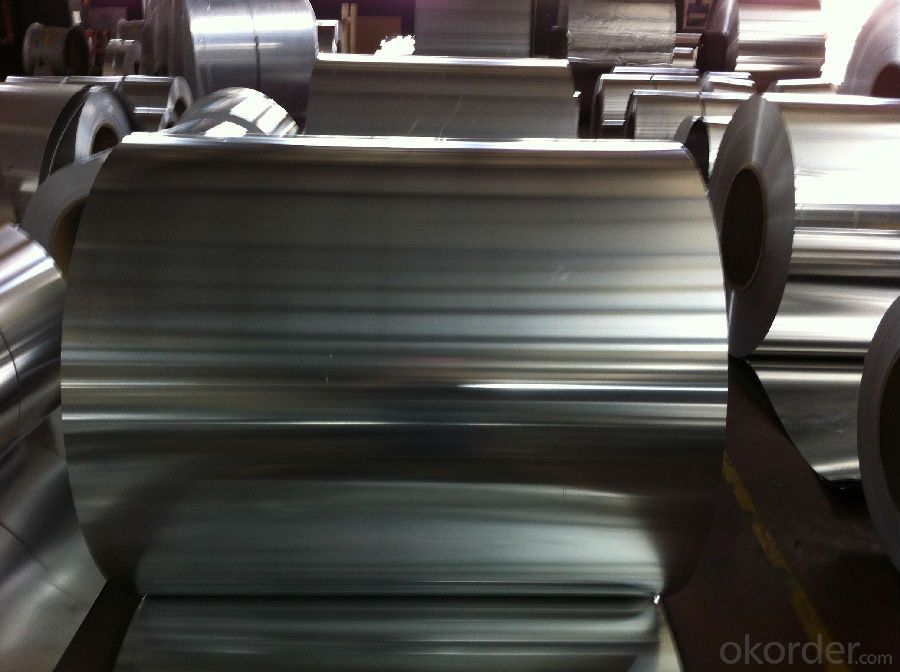

4. Product Specification
| ALLOY | TEMPER | WIDTH | COATING | THICKNESS |
| AA1050 | H14 | 1000MM-1500MM | POLYESTER | 0.2MM-3MM |
5.FAQ:
What is the quality standard?
---Usually our standard is GB3880-2006
What is the largest width?
---It is 2300mm
What is the MOQ?
---Usually we can accept 80 tons.
- Q: This question asks for methods to prevent aluminum sheets from warping or curling during processing or storage.
- <p>To prevent aluminum sheets from warping or curling, ensure proper storage by keeping them flat and avoiding stacking them under heavy loads. Maintain a controlled environment with consistent temperature and humidity to prevent expansion and contraction. When cutting, use sharp tools to minimize heat generation and stress. Apply a stress-relieving process after fabrication to reduce internal stresses. Use appropriate jigs and fixtures during fabrication to maintain flatness. Finally, consider the thickness and alloy of the aluminum sheet, as some are more prone to warping than others.</p>
- Q: Are aluminum sheets suitable for outdoor use?
- Indeed, aluminum sheets are well-suited for utilization outdoors. With its exceptional durability and resistance to corrosion, aluminum emerges as an optimal material for outdoor purposes. Despite its lightweight nature, aluminum exhibits remarkable strength, enabling it to endure severe weather conditions including rainfall, snowfall, and the harmful effects of UV radiation. Furthermore, aluminum sheets can be coated or painted, amplifying their resistance to corrosion and furnishing supplementary safeguarding against environmental elements. Consequently, aluminum sheets have garnered significant popularity in the domain of outdoor construction, signage, roofing, and various other exterior applications where endurance and longevity are paramount.
- Q: What are the potential health risks associated with handling aluminum sheets?
- <p>Working with aluminum sheets can pose certain health concerns, primarily due to inhalation of aluminum dust or fumes. Long-term exposure may lead to respiratory issues and potentially neurological problems. Aluminum dust can cause irritation to the eyes, nose, and throat. In some cases, it may contribute to the development of Alzheimer's disease, although this link is still debated. It's important to follow safety guidelines, such as using proper ventilation and wearing protective gear like masks and gloves, to minimize these risks.</p>
- Q: I'm wanting to buy colorguard poles, and I found some good deals on aluminum and fiberglass ones. But what are the pros and cons of each one?
- I'd say fiberglass because... - Durability - Aluminum is a very bendable metal. It dents, it bends, and it breaks easier than any other metal pole you'll find. This is because it's a very low density metal. - Flexibility = more dramatic twirling due to pole flex, and it's less breakable. - Counter Weight = A flag on one side of the pole would be harder to move around swiftly without a counterweight. Thus a heavier pole would entail having a center of gravity on the flag pole closer to the hand, making it easier to maneuver the flag, but the pole would be harder to lift as a whole. I'm no expert on colorguard poles, though. Fiberglass has come a long way. While aluminum is always the same material, fiberglass is a constantly evolving building material.
- Q: Can aluminum sheet be used for food packaging?
- Yes, aluminum sheet can be used for food packaging.
- Q: Can the export quality of China's aluminum plate meet the requirement of ASTM B 209? Is this requirement for our country? Master the exhibitions, O (a _ U) O thank you
- ASTM is the standard used in the United StatesEquivalent to China's GBGenerally equivalent to the use of Chinese standardsSpecific depends on whether the customer agreesIn fact, just do a testMeet its requirements
- Q: Solid aluminum or solid wooden boxes-no glass top. Would glass make the temperature rise more quickly? (ie Solar)? Thanks.Joseph
- Aluminum is a very good conductor of heat and wood is a very poor conductor of heat. If the heat source is inside the box with the food, it will heat quicker in a wooden box. If the heat source is outside the box it will heat quicker in an aluminum box. Having a glass top would be equivalent to having the heat inside the box so a wood box with a glass top will make a better solar heater.
- Q: This question asks about the effects of using aluminum sheets in the construction industry on the environment.
- <p>The environmental impacts of using aluminum sheets in construction are multifaceted. On the positive side, aluminum is lightweight, which reduces energy consumption during transportation. It is also recyclable, with a high percentage of construction aluminum being recycled, reducing waste. However, the production of aluminum is energy-intensive, contributing to greenhouse gas emissions. Additionally, mining for bauxite, the primary source of aluminum, can lead to habitat destruction and water pollution. Despite these concerns, aluminum's durability and resistance to corrosion can extend the lifespan of buildings, reducing the need for frequent replacements and thus the overall environmental footprint over time.</p>
- Q: What is the typical elongation of aluminum sheets?
- The elongation of aluminum sheets can differ based on the grade and temper of the aluminum. Generally, aluminum sheets possess a greater capacity for elongation compared to other metals. Elongation pertains to a material's capability to stretch or deform without fracturing. Typically, aluminum sheets exhibit an elongation percentage between 10% and 30%, implying they can be stretched by that proportion of their original length prior to reaching their breaking limit. Such impressive elongation capacity renders aluminum sheets incredibly flexible and appropriate for a multitude of applications, including construction, automotive, aerospace, and manufacturing industries.
- Q: Are aluminum sheets suitable for pharmaceutical applications?
- Aluminum sheets are well-suited for pharmaceutical use, as they possess a range of advantageous properties. Firstly, their lightweight nature and exceptional resistance to corrosion make them an ideal choice for packaging pharmaceutical products. By shielding the contents from external factors like moisture, light, and oxygen, which could potentially compromise the medication's quality, aluminum sheets offer excellent protection. Additionally, aluminum sheets are highly malleable and can easily be molded into different shapes and sizes, allowing for customized packaging designs. Moreover, their availability in various thicknesses provides options for different types of pharmaceutical products, including tablets, capsules, and liquid medications. Furthermore, aluminum sheets boast a remarkable barrier property that effectively prevents the transfer of odors, flavors, and contaminants. This barrier ensures the integrity and safety of the medication throughout its entire shelf life. Furthermore, aluminum is a non-toxic material, guaranteeing that it does not react with drugs or alter their composition. This quality makes it an optimal choice for pharmaceutical applications, where maintaining the purity and stability of the medication is of utmost importance. In conclusion, aluminum sheets are highly suitable for pharmaceutical applications, thanks to their lightweight nature, corrosion resistance, barrier properties, and non-toxic composition. By efficiently safeguarding and preserving pharmaceutical products, they ensure the quality and safety of these crucial medications.
Send your message to us
Aluminum Composite Sheets for Open Air Outer Decoration Aluminium Coils
- Loading Port:
- Shanghai
- Payment Terms:
- TT OR LC
- Min Order Qty:
- 5 m.t.
- Supply Capability:
- 3000 m.t./month
OKorder Service Pledge
OKorder Financial Service
Similar products
Hot products
Hot Searches
Related keywords













